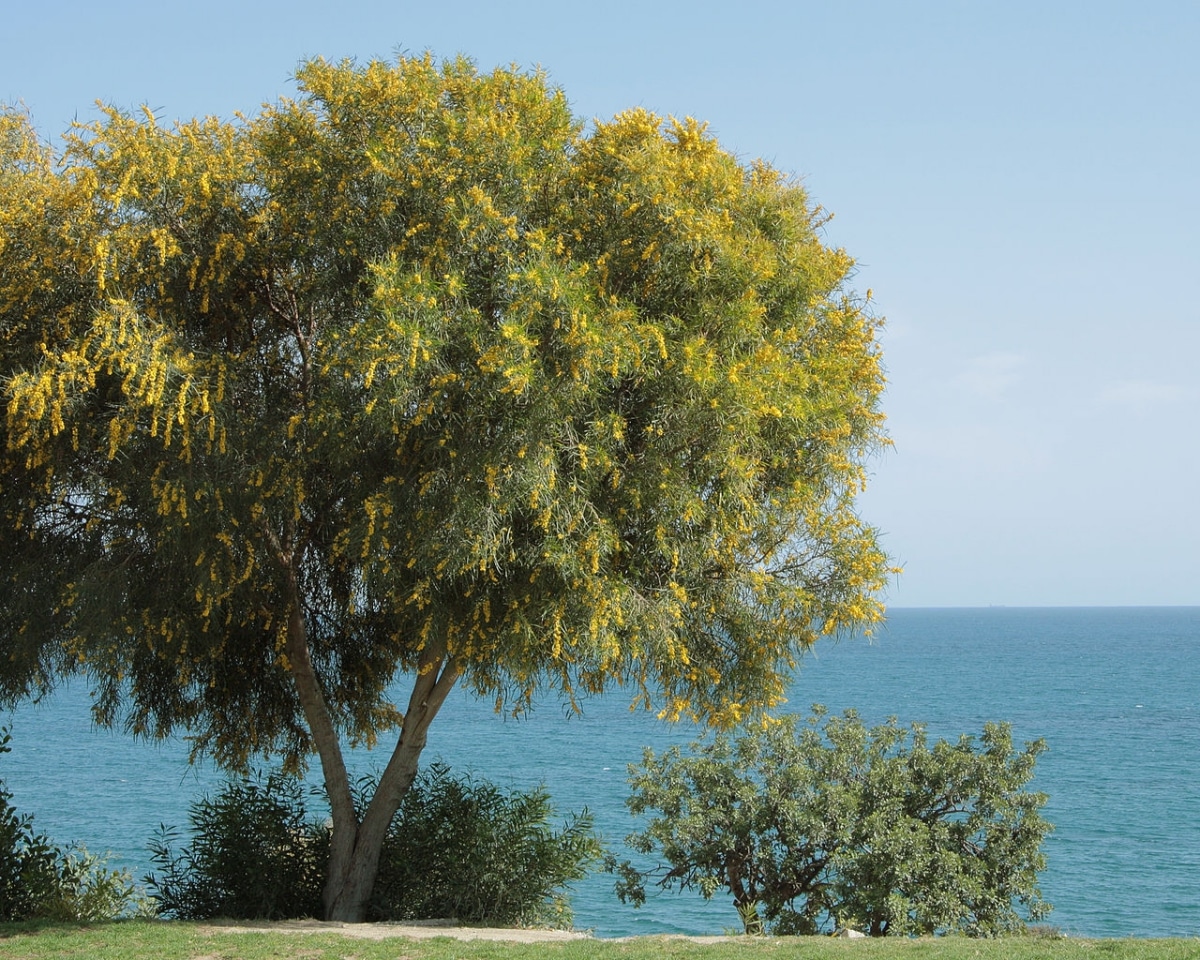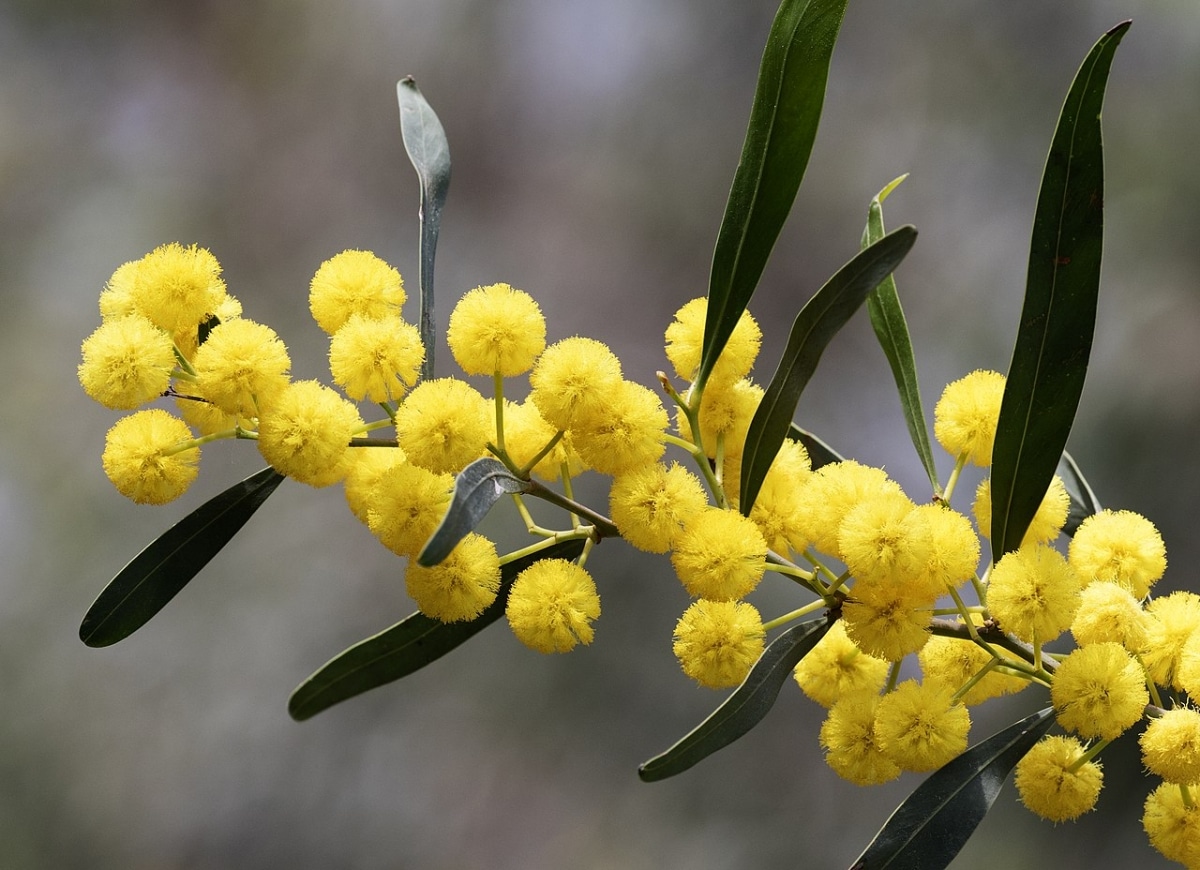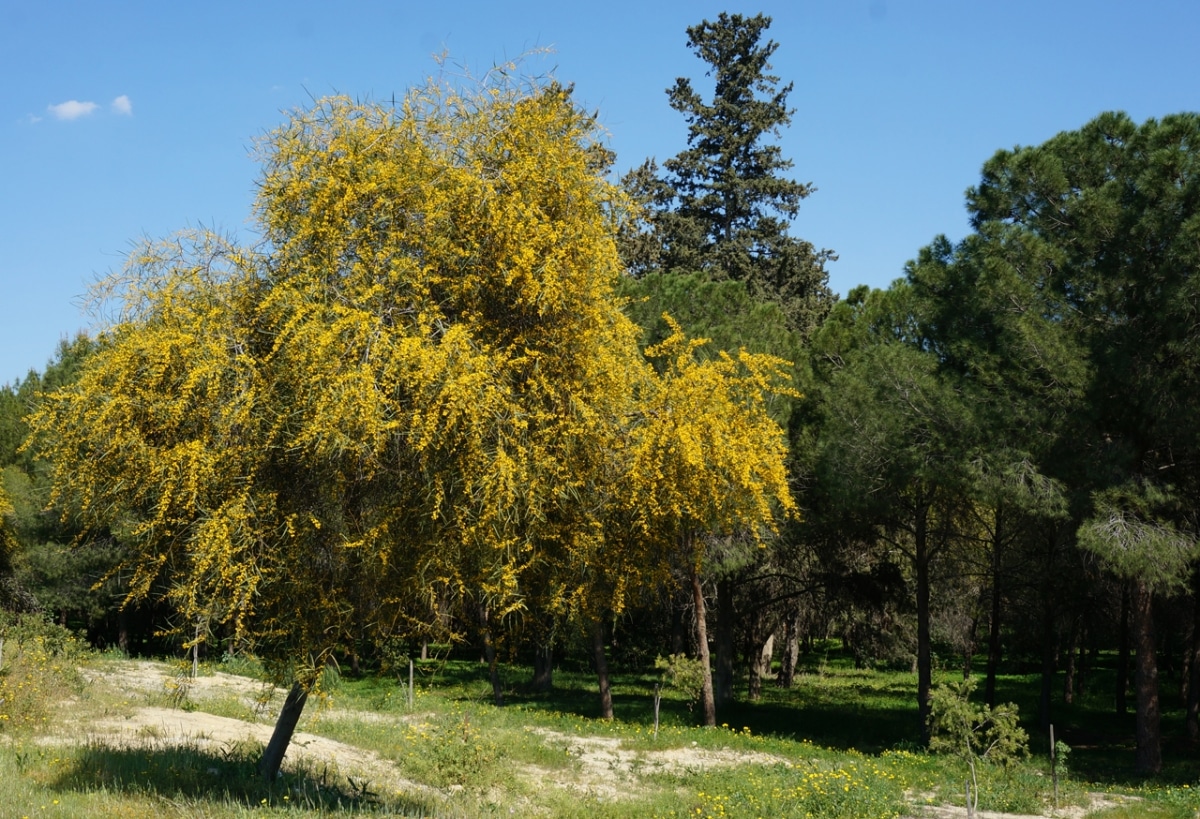
Image - Wikimedia / Anna Anichkova
La acacia saligna It is a fast-growing evergreen tree that can grow almost anywhere. It is an especially interesting plant for coastal gardens, as long as they are large, since the roots are quite long, and its trunk tends to thicken with age.
When it blooms, something it does in spring, its crown is filled with yellow flowers that, when they wither, fall to the ground, thus creating a beautiful floral “carpet”. But, how to take care of it?
Where is it originally from?
La acacia saligna, known by the name of blue mimosa or blue acacia, it is a tree that grows wild in almost the entire southern coast of Australia. It can grow as a solitary specimen or in groups, as well as in poor or cultivated soils. He has no preferences; in fact, it easily adapts to almost any environment, even resisting drought.
Its seeds germinate quickly and without problems during the spring, as long as they have some moisture and temperatures exceed 18ºC. If the conditions are also good, can grow up to 1 meter in height the first year, becoming a beautiful garden tree in a very short time.
What are the characteristics of the acacia saligna?
The blue mimosa is a tree, or sometimes a large, evergreen shrub that reaches a maximum height of 8 meters. The crown is quite wide, reaching 4-5 meters in adulthood, and casts a shadow that, from experience, I can say is very pleasant.
Its leaves are lanceolate, that is, they are spear-shaped, and measure about 30 centimeters long by about 5 centimeters wide. These are bluish green, and they fall as the weeks go by, as they are replaced by others.

Image - Wikimedia / Zeynel Cebeci
The flowers look like miniature pom-poms, which are 1 centimeter in diameter and yellow in color. As for the fruit, you should know that it is a legume up to 15 centimeters long by 1 centimeter wide., which contains about ten seeds or so. These are dark brown, and measure about 5 x 3 millimeters.
What care should be given?
Well the acacia saligna it is a plant that we could say that, once established, it takes care of itself. So more than telling you how you should take care of it throughout its life, I will tell you what it needs to be able to acclimatize and adapt well to the area where you want to have it:
Direct sun
You can never miss, not even since it is a newly germinated seed. For it to be healthy and develop normally, we should never plant it in the shade, since if we did, we would shorten its life quite a bit.
It has to be planted in the ground as soon as possible

Image - Wikimedia / Anna Anichkova
As I said before, the roots of the blue locust are very long and strong, and as it is a tree that grows fast, it is important that it be planted in the ground soon.
In this way, we will ensure that its trunk thickens much better, since it is difficult for it in a pot; and that numerous branches also sprout which will provide a very pleasant shade. But yes, it must be done away from walls, pipes, and others so that it does not spoil it.
And speaking of damage, you don't have to worry about frost: resists up to -12ºC.
You can not if it is a young specimen
During its youth, and even more so if it is in a pot, it is normal for it not to branch out very much (or not at all). For this reason, we may want to prune it so that it does produce new branches; but this from my point of view is an error, because you have to think that if it does not branch it is because, either it is not yet old enough for it, and/or because it is in a container, where space is therefore limited.
To get him to do it, it is best to simply plant it in the ground. You'll see how soon he has a nice cup.
Water it sparingly if it's in a pot.
Although it is a plant that can withstand long periods of drought, this is only true if it was planted or germinated in the ground at least a year ago. In a pot you have to be careful with this, and avoid leaving the soil dry for a long time.Otherwise, the roots will suffer and the leaves will fall.
To avoid it, you have to water several times a week during the warm months of the year, and space the risks the rest. Once we plant it in the garden, we will continue to water it sparingly for the first year.
Sow the seeds in spring

Image - Wikimedia / Philmarin
To get more acacias, you can sow the seeds once spring has already set in. For it, I advise you to put them for a second in boiling water with the help of a strainer, and 24 hours in warm water or at room temperature. The next day, you have to sow them in pots with universal substrate (you can buy it here), putting no more than two in each, and burying them one centimeter or less.
Water them, and put them in the sun. After 7 to 15 days -or sometimes more, if the seeds are old- they will begin to germinate.
What do you think of the acacia saligna? Do you like it as a garden tree?